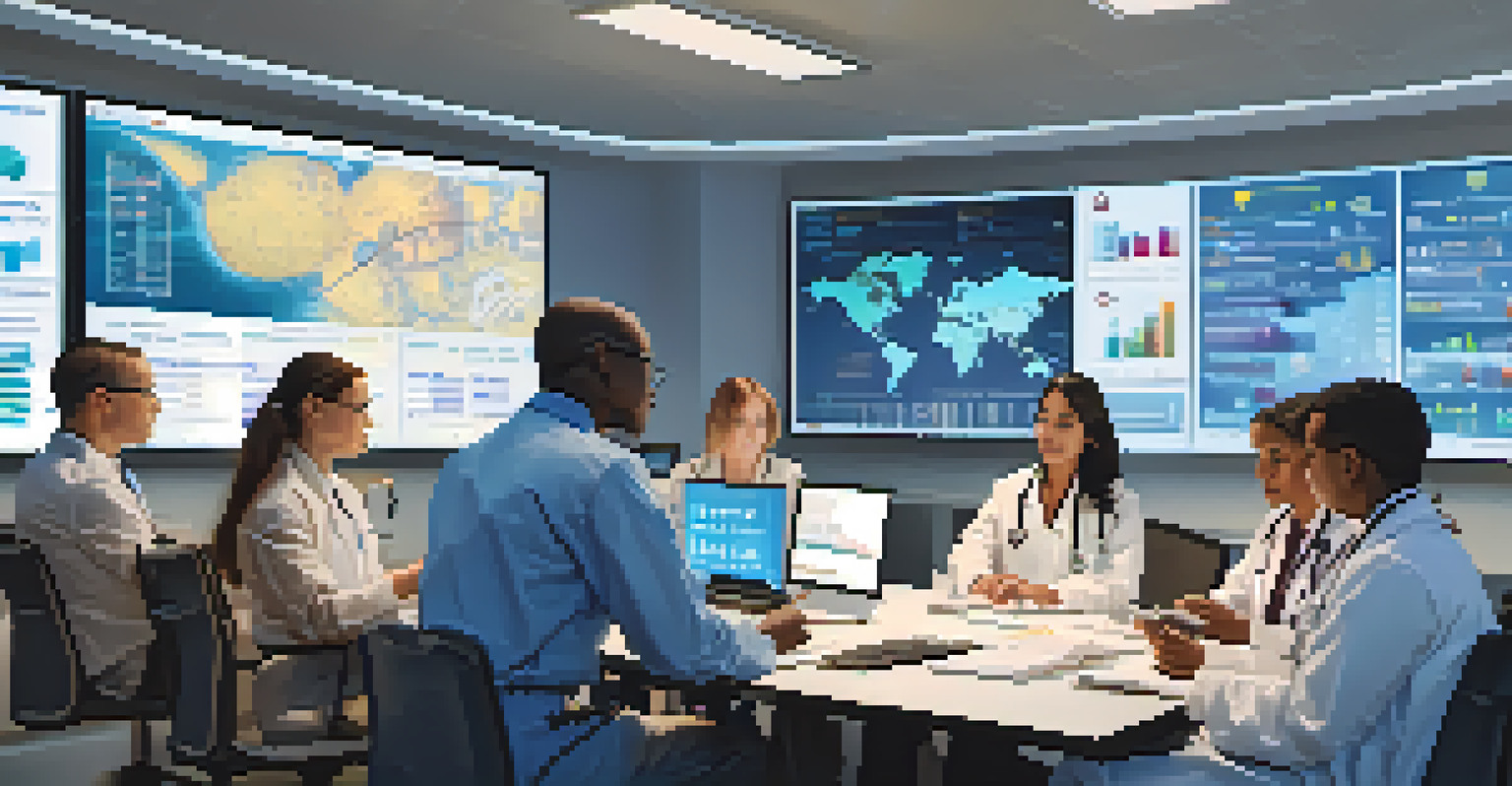Health Data Interoperability: Seamless Information Sharing

Understanding Health Data Interoperability and Its Importance
Health data interoperability refers to the ability of different healthcare systems to exchange, interpret, and use health information seamlessly. This connectivity is crucial because it ensures that healthcare providers have access to complete and accurate patient data, which ultimately improves patient care. Think of it like different puzzle pieces fitting together to create a complete picture of a person's health.
Health information technology is the backbone of an efficient healthcare system, enabling interoperability that leads to better patient care.
When health data can flow freely between systems, it enables timely decision-making and reduces the chances of errors. For instance, if a patient visits a new doctor, that doctor can quickly access their medical history, lab results, and medications without the hassle of paperwork or delays. This not only saves time but also enhances the overall patient experience.
Moreover, interoperability is vital for public health initiatives, research, and policy-making. By aggregating data from various sources, healthcare organizations can identify trends, track outbreaks, and implement effective solutions. This collective intelligence is essential for building a healthier society.
The Benefits of Seamless Information Sharing in Healthcare
Seamless information sharing through interoperability leads to numerous benefits for both healthcare providers and patients. One of the most significant advantages is improved patient outcomes. When healthcare professionals have immediate access to all relevant patient information, they can make better-informed decisions regarding treatment and preventive care.

Additionally, interoperability reduces administrative burdens. Healthcare staff spend less time reconciling different systems or duplicating efforts, allowing them to focus more on patient care. For example, a nurse can quickly pull up a patient's records without having to sift through stacks of paperwork or navigate multiple software platforms.
Interoperability Enhances Patient Care
Seamless health data sharing allows providers to access complete patient information, improving decision-making and outcomes.
Moreover, seamless information sharing enhances care coordination. In cases where patients have multiple providers, such as specialists and primary care physicians, interoperability ensures that everyone is on the same page. This coordinated approach minimizes the risk of conflicting treatments and fosters a team-based approach to healthcare.
Challenges Facing Health Data Interoperability Today
Despite its many benefits, achieving health data interoperability is not without challenges. One major hurdle is the lack of standardized formats and protocols for data exchange. Different healthcare systems may use varying terminologies or structures, making it difficult for them to communicate effectively. This can be likened to trying to understand a foreign language without a translator.
Interoperability is key to achieving the goals of patient-centered care and improving population health.
Another significant challenge is the issue of data privacy and security. With an increase in data sharing, concerns about unauthorized access and breaches rise. Healthcare organizations must strike a balance between sharing information and protecting sensitive patient data, which can sometimes lead to reluctance in adopting interoperable solutions.
Finally, the financial aspect cannot be overlooked. Implementing interoperable systems often requires significant upfront investment and ongoing maintenance costs. Smaller healthcare providers may struggle to allocate the necessary resources, which can impede progress toward achieving full interoperability across the industry.
Key Technologies Driving Interoperability in Healthcare
Several technologies are paving the way for improved health data interoperability. One of the most prominent is Application Programming Interfaces (APIs), which allow different software systems to communicate with one another in real time. APIs act as intermediaries, facilitating data exchange without requiring users to navigate complex processes.
Another important technology is Health Information Exchanges (HIEs), which serve as centralized platforms that enable healthcare providers to share patient information securely. HIEs help bridge the gap between disparate systems, ensuring that critical health information is available when and where it is needed.
Challenges Hinder Data Exchange
Issues like lack of standardization, data privacy concerns, and financial constraints pose significant barriers to achieving interoperability.
Lastly, blockchain technology is emerging as a promising solution for enhancing security and trust in health data sharing. By creating a decentralized and immutable record of transactions, blockchain can help protect patient data while allowing authorized parties to access necessary information, fostering a more secure interoperable environment.
Regulatory Frameworks Supporting Interoperability Initiatives
Regulatory frameworks play a crucial role in promoting health data interoperability. In the United States, initiatives like the 21st Century Cures Act and the Interoperability and Patient Access final rule are designed to enhance data sharing among healthcare providers. These regulations not only set standards for interoperability but also empower patients by granting them greater access to their health data.
Internationally, organizations like the World Health Organization (WHO) are advocating for interoperability standards to improve global health outcomes. By fostering collaboration across borders, these efforts aim to enhance data sharing for better disease tracking, research, and resource allocation.
Ultimately, robust regulatory support is essential for driving interoperability initiatives forward. Without clear guidelines and accountability, healthcare organizations may hesitate to invest in the necessary technologies and processes to achieve seamless information sharing.
Real-World Examples of Successful Interoperability
Several healthcare organizations have successfully implemented interoperability solutions, showcasing the potential benefits. For instance, the Mount Sinai Health System in New York uses a centralized health information exchange that integrates patient data from various sources, enabling providers to access comprehensive medical histories. This approach has led to improved patient care and reduced redundant testing.
Another example is the Blue Button initiative by the U.S. Department of Veterans Affairs, which allows veterans to easily access and share their health records. By empowering individuals to control their data, the initiative enhances patient engagement and fosters a more collaborative healthcare environment.
Technologies Driving Progress
APIs, Health Information Exchanges, and blockchain are key technologies facilitating improved communication and security in health data sharing.
These real-world examples highlight how interoperability can transform healthcare delivery. By learning from these successes, other organizations can adopt similar strategies to enhance their data sharing capabilities and improve patient outcomes.
The Future of Health Data Interoperability
The future of health data interoperability looks promising, with ongoing advancements in technology and regulatory support. As more healthcare organizations recognize the value of seamless information sharing, we can expect to see an increase in collaboration and innovation in the field. This shift will likely lead to improved patient experiences and outcomes.
Additionally, the rise of artificial intelligence (AI) and machine learning will further enhance interoperability capabilities. These technologies can analyze vast amounts of data, identify trends, and provide actionable insights, ultimately supporting healthcare providers in making informed decisions.

As we move forward, the focus will be on creating a sustainable and secure interoperable ecosystem. By prioritizing patient privacy, investing in technology, and fostering collaboration among stakeholders, the healthcare industry can work toward a future where seamless information sharing is the norm, benefiting everyone involved.